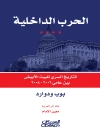This book explores the ways that institutions play a role – or fail to – in Japanese and American approaches to regional governance in East Asia. It uses recent studies on the logic and dynamics of institutions to determine the logic of order within the East Asia region. The central focus is on bilateral and multilateral regional institutions.
विषयसूची
Introduction PART I: LOGICS OF INSTITUTIONS Institutions of Convenience: U.S. Foreign Policy and the Pragmatic Use of International Institutions; M.Mastanduno Japan: Bilateralism at Any Cost?; T.Inoguchi PART II: INSTITUTIONS AND POLITICAL CONTROL Layering Institutions: The Logic of Japan’s Institutional Strategy for Regional Security; T.Kawasaki Currents of Power: U.S. Alliances with Japan and Taiwan during the Cold War; V.D. Cha U.S.-Japan Alliance as a Flexible Institution; K.Murata PART III: THE LIMITS OF INSTITUTIONS The Uses of Institutions: The United Nations for Legitimacy; A.Fukushima Money, Capital and Cooperation in the Asia-Pacific Reginon; J.Kirshner Ripe for Rights: Problems and Prospects for a Human Rights Regime in East Asia; T.Berger
लेखक के बारे में
G. John Ikenberry is the Albert G. Milbank Professor of Politics and International Affairs at Princeton University in the Department of Politics and the Woodrow Wilson School of Public and International Affairs. Ikenberry is also a Global Eminence Scholar at Kyung Hee University in Seoul, Korea. He is the author of After Victory: Institutions, Strategic Restraint, and the Rebuilding of Order after Major Wars (2001), which won the 2002 Schroeder-Jervis Award, and is co-author of Crisis of American Foreign Policy: Wilsonianism in the 21st Century (2009), The Alliance Constrained: The U.S.- Japan Security Alliance and Regional Multilateralism (2011), edited with Takashi Inoguchi and Yoichiro Sato, and Liberal Leviathan: The Origins, Crisis, and Transformation of the American World Order (2011).












